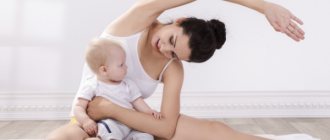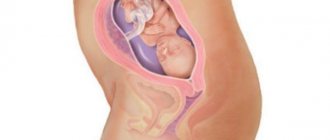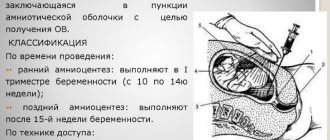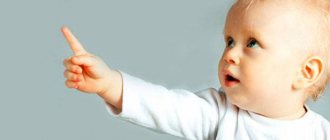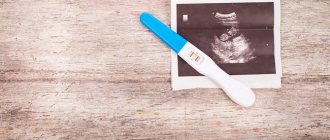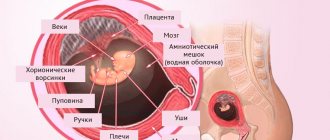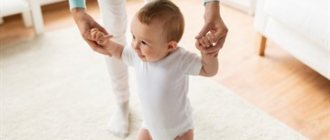Temperature
The room temperature should be 22-25 degrees. It should not be too hot and not too cold. What is more important is the absence of drafts. Close the windows and vents during this time.
The water temperature, as our grandmothers measured: by immersing the elbow in water: if it is normal for the elbow, then it is normal for the child. When your child is very young, you can use a thermometer.
As the child grows up, it becomes too lazy to use it, and the mother becomes more and more like an “elbow”.
The optimal temperature for bathing a one-year-old child and older is 32-33 degrees, this is exactly the temperature in children's pools. If your child is sitting in the bathtub and you are worried that the water has already cooled down, you should not add hot water if the child is comfortable in it.
Bathing in hot water does not have any benefit: it only dries the skin more, relaxes it and can have a laxative effect. Swimming, on the contrary, in cooler water strengthens and strengthens the immune system.
Just not harshly: you decided to harden the child and immersed him in an ice bath, under no circumstances! Very, very carefully, by lowering each bathing degree by degree.
Features of bathing newborn babies
You can wash your baby from the first day of life, but only in a small bath with boiled water. Bathing in tap water and a large bath is not recommended until the umbilical wound heals.
Usually the umbilical wound in a newborn heals within 2 weeks. At this time, the baby is bathed with boiled water and the addition of a decoction of medicinal herbs. Pediatricians recommend adding a decoction of chamomile and string to water. These decoctions eliminate inflammation and speed up the healing of the umbilical wound.
How often you can bathe a newborn baby depends on whether the house is warm and whether the umbilical wound has healed. If the baby's navel becomes wet or festeres, it is better to avoid swimming in the bath. The baby is wiped with wet wipes or a towel soaked in warm water.
Grandmothers advise placing a soft towel or a diaper folded in several layers in the baby bath. Thanks to this, the baby's back touches the soft surface.
What to do if water gets into your mouth?
Sometimes this happens by accident during the game. Sometimes, if a child does not bathe in special devices, he can dive and take a sip of water accordingly. Sometimes kids do this on purpose.
My Danil really likes to play “pour over” with cups and sometimes he can specifically drink from this very cup. What to do in such cases?
Well, first of all, do not panic or yell at the child under any circumstances. He's just as scared as you are. If you scream, you will scare him even more, and what could be even worse - the child will be afraid of water and water procedures. Secondly, nothing terrible happened; a second dive will not lead to bad consequences.
If your child coughs or sneezes, which is the natural way to clear the airways, give him a good cough. If he’s just crying, you can take him out and hold him close to you, but he’s wet, so the child will understand that mom is always there and nothing bad happened.
If he goes back into the water, then you can continue swimming, but if he flatly refuses, then don’t force him, that means swimming is over for today.
Getting ready to visit the clinic
Every month, at a doctor’s appointment, the baby is weighed and his height is measured. In the second month, a child should gain an average of 800 g in weight, but may gain as much as 1000 g.
At two months, the national vaccination calendar includes vaccination against hepatitis B and pneumococcal infection. Even at this time, you will receive, as planned, a referral for general clinical tests (blood and urine tests) and a referral for consultation with specialized specialists (neurologist, surgeon). It is important to do this before three months, since you will have a very serious combined vaccination against whooping cough, diphtheria, tetanus and polio at three months.
Caring for a child requires parents to be inquisitive, to be aware of all the nuances and latest trends in the upbringing and development of children at any age. On our website you will find a lot of useful information that will allow you to live through this anxious time without fear and without worrying that you don’t know something about your little ones.
This topic was discussed for you by a practicing pediatrician and two-time mother Elena Borisova-Tsarenok and father of two children Mikhail Gavrilov.
Bathing for a newborn child and his parents is a whole event (especially if it is the first time after the maternity hospital). Like any very responsible business, this process raises many questions: how and when to bathe, boil water or not, whether it is possible to add herbal decoctions and how often to do this, is it dangerous to get water into the ears, and so on. The famous pediatrician Evgeny Komarovsky, in his books and articles, has repeatedly talked about the basic rules and principles of organizing water procedures for a baby.
It is worth considering the most important points that you should know so that bathing brings pleasure and benefit to both the child and his parents.
Comfort and reassurance
Keeping your baby in herbs will improve his body's health and relieve skin problems. Herbs such as nettle, chamomile, and string will help. A bath with sea salt and decoctions of these herbs will enhance the healing effect.
The series manages to relieve inflammation on the skin and reduce rashes. You can't often bathe in a line. You can add it once a week, as it dries out the skin.
Bathing in chamomile has a beneficial effect on the nervous system and disinfects water. Chamomile has antiviral and antibacterial properties.
Bay leaf helps with allergic rashes, purulent wounds, eczema, diathesis. Bay leaf is a strong natural antibiotic that helps get rid of excessive sweating. The essential oils that each leaf contains help calm the nervous system and cope with insomnia.
Bay leaf helps get rid of inflammation on the skin. Its decoction is used as a lotion or evening baths. To prepare the decoction, take bay leaves (7-10 pieces) and boil in water for 20 minutes. After this, let it brew for an hour. The strained infusion is added to bathing water.
Bay leaf is considered a safe allergy treatment, but caution should be exercised in children under one year of age. Up to 3 months the leaf can only be used externally, after which it can be drunk.
Bay leaf also has its contraindications for use: stomach diseases, constipation, pancreatitis. You should not repeat the procedure daily. This will prevent rashes and dry skin.
Soothing baths are recommended for children who are overexcited, sleep poorly, or have confused day and night. They should be taken an hour before bedtime.
Soothing herbs that can be added to water: valerian, lavender, mint, oregano. Any herbs should be used with caution.
- procedures with decoctions of several herbs are not allowed in the first month of a child’s life. This makes it difficult to identify allergies to a specific plant;
- if the herbs are in filter bags, then use 5 of them per 1.5 liters of water;
- Before dipping a child into a bath with herbs, be sure to moisten a cotton swab with the decoction and apply it to the child’s skin. If after a few minutes there is no allergic reaction, you can bathe the baby.
How to wash little ones
- When a child is not yet a year old, many parents are afraid to bathe their babies. Then you can do it together - so that one holds the child and the other washes.
- Babies at such an early age do not get dirty so much, so they can be washed, but again without using soap, only 2-3 times a week. Children up to one year old do not need daily water procedures. Using napkins will also be very helpful. But daily evening washing, of course, is simply necessary.
For information on how to properly wash newborns, check out the articles.
We hear, we see, we touch
They say that the eyes are the window to the soul. And for newborns, these are two windows into his brain. How does a baby recognize the face of its mother or father?
In the first 5 weeks, the baby distinguishes only contrasting areas of the face - hair, facial contours, chin, neck, etc.
But from 7 weeks he is looking for eyes. By recognizing the faces of his parents, he gets to know the world around him. And at the same time learns to predict future events. This was proven by Marshall Haight, a child psychologist. He argues that infants understand the sequence of events, can collect information, and therefore learn.
Under no circumstances should you use rattles to calm your baby. Crackling and noise can cause a child to become deaf. In general, excessive noise excites a person’s nervous system, making him nervous, inattentive, and unfocused. Rattles can only be played in a calm state. They should have a quiet, melodic sound, and the sound should be enjoyable.
From the first days of life, begin to develop your child’s hearing. It has already been proven that the baby responds to the music that he listened to in utero. Therefore, it is very important to stimulate and develop the baby's hearing.
From 7-8 weeks, the baby turns his head towards the sound stimulus. From now on, it is very good to use a turntable with bright sounding toys, which is fixed above the baby’s crib.
Baby sleep, hygiene, massage and exercises for baby development at 3 months
Three months is the time of the first tangible changes in the development of your child, my dear friends. You will definitely feel this when talking to him, taking him in your arms. The baby develops awareness, and it is already expressed in literally everything - in feeding, in the daily routine, in development.
But we will talk about this in the next article, and today, as in previous months, we will start talking about caring for a child at 3 months, what daily routine is necessary for him during this period, what elements of massage and exercises need to be added to those that you used last month.
Baby hygiene at 3 months
How to dress a 3 month old baby at home
A child's skin at 3 months is still tender and sensitive, so hygiene must be observed not only every day, but throughout the day. It is still important to maintain a temperature of 18-22º in the room where the child is. No need to wrap it up. Such excessive care for the baby can lead to diaper rash or prickly heat. At high temperatures, a child's skin is constantly exposed to sweat salts, which causes inflammation of the skin.
High temperature is needed only during bathing, and throughout the day, if the room is warm, light clothing and a light blanket. If the child is cold, he will let you know by screaming. Just like an adult, a baby will not tolerate the cold. Once upon a time, our school nurse told very young girls in medicine classes: “Never bundle up your future children, you will only harm them,” and then told us a story that she witnessed while working in a hospital.
One day, an infant was brought to the hospital with heatstroke. It was winter outside, and the doctors were very surprised how the child could overheat so much in the middle of winter, but after talking with his mother, everything fell into place. She, worried that the baby might freeze and get sick, wrapped him in several warm diapers and put him to sleep in a crib near the stove.
Of course, this is a rare and extreme case, but prickly heat and diaper rash are common causes of overheating. When my child was still small, and I was an inexperienced mother, our patronage sister was a very elderly and knowledgeable woman. She always told me: “Dress your child a little warmer than you dress yourself.”
How to properly cut a child's fingernails and toenails
Usually, new details appear in caring for a 3-month-old baby - cutting nails. Long nails are an accumulation of dirt and minor injuries to the baby, which he can inflict on himself, so nails must be trimmed. You just need to do this carefully and carefully.
It is correct to cut your child's fingernails in an arched manner, and on his toes - evenly; this particular haircut will protect against nails growing into the corners of the soft tissues on the hands and feet.
You can trim your nails with tweezers or nail scissors. Use the tool you are used to using. It is advisable that the baby has his own scissors, but if you decide to use your own scissors, then be sure to treat them with alcohol.
It is better to cut a child’s nails when he is sleeping and not twitching his arms and legs, because if he is mobile, you can easily injure him. If you do the haircut quietly and carefully, the baby won’t even feel anything. This procedure is very convenient to do for a sleeping little one if there is no way for someone to help you.
Never start cutting your nails when you are in a bad mood or worried, as you may harm your baby. Well, if it does happen that during a haircut you accidentally injure your child’s finger, don’t worry, lubricate it with iodine, brilliant green or other disinfectant.
Also, never trim your nails after taking a bath. They become soft from water and you can cut off the nail plate more than necessary, and thus injure the baby.
How often to bathe a 3 month old baby
We still bathe the baby every day, only the bathing time changes. If we bathed a newborn toddler for 5 minutes, then for a three-month-old baby the time increases to 15-20 minutes, give him the opportunity to enjoy bathing. Many children like this procedure.
The water temperature during bathing should be no lower than 37º, and the air temperature 22-26º, so the child will be comfortable. If he cries during water procedures, he may be hot or cold, watch him.
You rinse his hair every day, since the baby sweats, but shampoo should be used no more than once a week.
After bathing, lightly pat the body with a soft towel, do not forget that the baby’s skin is delicate. Then be sure to lubricate with special oil or cream, then the water will not dry out the child’s skin.
Approximate daily routine for a child
At 3 months, the baby’s sleep and wakefulness patterns remain approximately the same as they were at two months of age. But still there are small changes in it, the time of wakefulness and daytime sleep increases. If at 2 months the baby slept for about 8 hours during the day, now he needs 5-7 hours for daytime sleep, respectively, his time for exploring the world and his feelings has increased from four hours to ten.
But all this, I repeat, is approximately, since each baby is an individual, and he will set his own daily routine, and the mother has no choice but to adjust her routine to the routine of her little one.
Baby's sleep
I have already said that every baby is an individual, and at 3 months it begins to clearly manifest itself. Some people like to sleep more in the morning and during the day, and then arrange for their mother “Bartholomew’s Night”, without sleep and peace. Others sleep at night on their own and let their parents sleep, then during the day there is one continuous period of wakefulness with small “naps”. This is how “larks” and “owls” begin to manifest themselves.
There are also small children who are very sensitive to the weather. If it is sunny outside, they are calm and cheerful; if it is cloudy or raining outside, some will be capricious all day, others will sleep, waking up even during feeding time.
As you can see, the daily routine is still set by the baby, or more precisely, by his nervous system, so study the day of your little one and simply correspond to it.
Does a child need a massage?
Of course, a child at 3 months needs a massage and is very important. It not only affects the overall development of the child, but also creates a joyful mood and encourages him to be active.
If last month the main massage technique was stroking, now rubbing is added to it. The palm is in even and tight contact with the baby’s skin, rubbing it in different directions. This technique improves blood circulation.
We continue to do the massage techniques we mastered last month and add new ones with elements of rubbing. To perform a massage, you can use baby oil.
- First we stroke the arms and legs. Then we massage the legs and arms in a circle from the fingers to the armpits and inguinal cavities. We finish the massage of the limbs with stroking again. We repeat each technique 4-6 times.
- Next we stroke and rub the hands and feet in the same sequence, first stroking, then rubbing and stroking again.
- We move on to the tummy, stroking again, lightly rubbing and stroking.
- We turn the little one onto his back and massage the back and buttocks in the same way. Pay special attention to massage along the spine.
Smile and constantly talk to your child during the massage.
After you have done the massage, we move on to gymnastic exercises.
Exercises for child development
Gymnastic exercises at 3 months are aimed at stimulating reflex movements, improving blood circulation, strengthening and developing muscles.
Exercise 1. Reflex crawling.
This exercise is performed both on the back and on the stomach. We place our palms on the child’s soles and gently push him. The legs bend at the knees, the baby tries to straighten them and begins to crawl. Soon he will learn to push himself with his feet in order to crawl.
Exercise 2. Spinal extension.
We place the baby on his side, and use the index and middle fingers to run along the spine from the neck to the sacrum.
Exercise 3. Flexion of the foot.
In order for the child to reflexively flex the foot, you need to run your finger along its outer edge from the base of the toes to the heel.
Exercise 4. Raising and lowering extended legs.
We place the child on his back, then alternately raise and lower his outstretched legs. We do 15-20 movements like this, take a half-minute break, and repeat the exercise again. At first we do three such repetitions, and every day, gradually, we bring it up to eight times.
Exercise 5. “Frog”.
At the same time, we bend both legs at the knee and hip joints, pressing them to the tummy, and then straighten the legs. We perform this exercise 8-10 times.
Exercise 6. Arm curl.
While lying on your back, spread your arms out to the sides and up, then cross them over your chest, bending them at the elbow joints.
The position is the same, alternately raising the baby’s arms up and lowering them, bending them at the elbow joints.
Lying on your back, first alternately, and then simultaneously stretch your arms forward.
Each movement is performed 8-10 times, take a minute break and repeat it again. We start repetitions with 3 times and gradually increase them to five.
What vaccinations are given?
At 3 months, the child is vaccinated against a number of severe childhood infections. The first vaccination is a combined one, the vaccine that will be administered to the baby will protect him from three terrible diseases at once: whooping cough, diphtheria and tetanus. This vaccination is given to a healthy child three times with an interval of 1.5 months. It is very important to comply with these deadlines; if you get vaccinated earlier, instead of increasing immunity, the opposite process may occur; if later, you will lose susceptibility to infection.
Typically, children tolerate this vaccination well, but in some cases the temperature may rise, the child becomes capricious, and possible distress. However, the deterioration of the child’s health may not be due to the vaccination, but to a respiratory, intestinal or some other infection that coincided with it. Therefore, at the first signs of deterioration in the child’s condition after vaccination, you should immediately consult a doctor.
Simultaneously with vaccination against whooping cough, diphtheria and tetanus, the first vaccination against polio is given. This is a very serious childhood disease that affects the spinal cord and peripheral nerves, causing paralysis of the limbs.
The anti-polio drug comes in liquid or pill form and is given directly to the child's mouth. This vaccination is also done three times with a break of 1.5 months.
It is strictly forbidden to vaccinate children who have recently been ill or if they have been in contact with infectious patients. Be sure to tell your doctor this.
After vaccination, the child should be closely monitored; he should neither overheat nor become hypothermic. During this period, new foods should not be introduced into food. It is very important to protect the child from the disease by all means, since it can have a bad effect on the development of immunity, and this occurs within 4-6 weeks after vaccination.
Nowadays, both doctors and parents argue a lot about whether to vaccinate or not. I will not agitate you either for or against. This is a question every parent must decide for himself. My task was to tell you what vaccinations are given at this age, what needs to be done for it to give a good result, and what not to do so as not to harm the baby.
I wish you and your babies health, my dears.
I wish everyone happiness, Natalia Murga
The husband went out to smoke on the street in front of the house. My son (3 years old) saw him with his jacket unbuttoned and said to me: “Ma-a-am, and dad went out into the street undressed again.” I answer: “Well, you need to scold him when he comes.” My son sighed, took the rope, came up to me and with a smart expression on his face said: “It’s no use scolding - it’s time to beat!”
My dear readers, if you liked the article, please leave your review. Your opinion is very important to make the blog interesting and useful.
Give your friends the opportunity to read this article too. All you need to do is click on the social media buttons and share information with them.
hobby-house.com




